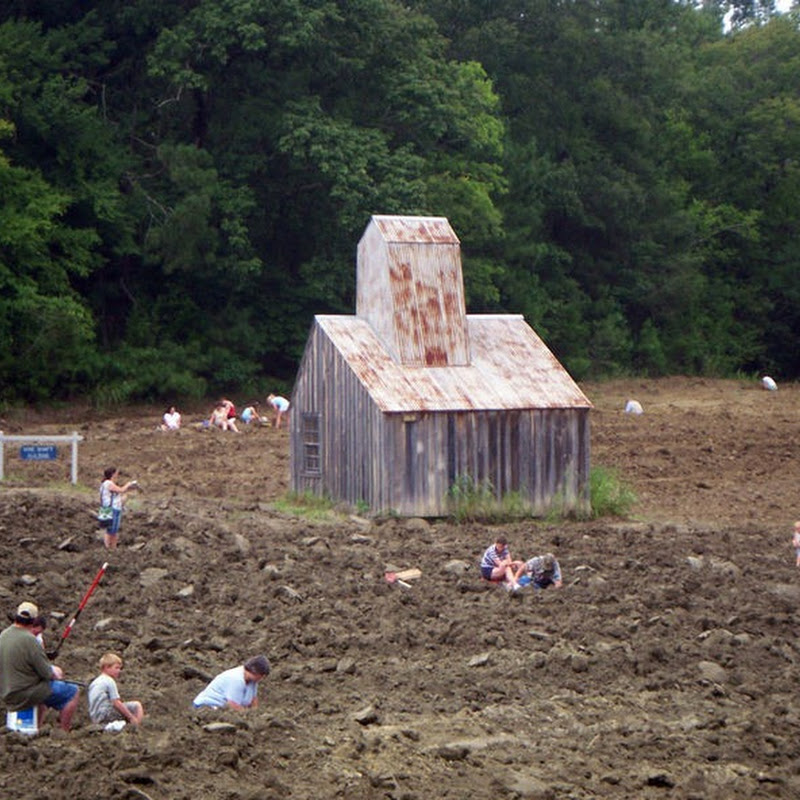There is a place in the district of Uttara Kannada of Karnataka state in India, where hundreds of shrines of the Hindu god Shiva are carved in the exposed rocks of the Shalmala riverbed and on its banks. The site is called Sahasralinga, literally, “a thousand lingas”, and is located in the middle of a forest in the Western Ghats. The nearest town is Sirsi Taluk, around 17 km away. The best time to visit the place is when the water level in the river is low, and most of the shrines are visible along with their bases called “yonis”. Originally, every linga had a carved figure of the holy bull called Nandi facing it, but many of these have been damaged and some are missing. On the auspicious occasion of Maha Shivaratri, a Hindu festival, thousands of pilgrims throng to this place to worship Lord Shiva.
The shrines are believed to have been built on the order of Sadashiva Raya, the king of Sirsi, of the Vijayanagar Kingdom during 1678-1718. According to a local legend, the king commissioned them on the belief that doing so might help him beget an heir to his kingdom.

Photo credit: Unique Creator/Wikimedia
It should be noted that places like Sahasralinga are not uncommon in India. In Orissa and near Hampi in Karnataka, there are sites where hundreds of lingas are curved in the rocks. But Sahasralinga is unique because the shrines are of various sizes and scattered all over the river bed over a wide area. It’s difficult to say how many shrines are there at Sahasralinga.
There is another Sahasralinga, in far away Cambodia, about 25 km from the famous Hindu temple of Angkor Wat. The place is called Kbal Spean, which means “Bridge Head”, but is commonly known as the “Valley of one thousand lingas”. Along with lingas, there are various Hindu mythological motifs in that river bed including depictions of Shiva, Vishnu, Brahma, Lakshmi, Rama, and Hanuman, as well as animals such as cows and frogs.

Photo credit: www.indiadivine.org

Photo credit: www.indiadivine.org

Photo credit: www.indiadivine.org

Photo credit: www.indiadivine.org

Photo credit: www.indiadivine.org

Photo credit: www.indiadivine.org

Photo credit: Unique Creator/Wikimedia
Sources: Wikipedia / Deccan Herald
Subscribe to our Newsletter and get articles like this delieverd straight to your inbox
The shrines are believed to have been built on the order of Sadashiva Raya, the king of Sirsi, of the Vijayanagar Kingdom during 1678-1718. According to a local legend, the king commissioned them on the belief that doing so might help him beget an heir to his kingdom.

Photo credit: Unique Creator/Wikimedia
It should be noted that places like Sahasralinga are not uncommon in India. In Orissa and near Hampi in Karnataka, there are sites where hundreds of lingas are curved in the rocks. But Sahasralinga is unique because the shrines are of various sizes and scattered all over the river bed over a wide area. It’s difficult to say how many shrines are there at Sahasralinga.
There is another Sahasralinga, in far away Cambodia, about 25 km from the famous Hindu temple of Angkor Wat. The place is called Kbal Spean, which means “Bridge Head”, but is commonly known as the “Valley of one thousand lingas”. Along with lingas, there are various Hindu mythological motifs in that river bed including depictions of Shiva, Vishnu, Brahma, Lakshmi, Rama, and Hanuman, as well as animals such as cows and frogs.

Photo credit: www.indiadivine.org

Photo credit: www.indiadivine.org

Photo credit: www.indiadivine.org

Photo credit: www.indiadivine.org

Photo credit: www.indiadivine.org

Photo credit: www.indiadivine.org

Photo credit: Unique Creator/Wikimedia
Sources: Wikipedia / Deccan Herald
Subscribe to our Newsletter and get articles like this delieverd straight to your inbox
The Thousand Shrines of Sahasralinga
4/
5
Oleh
Chandu Numerology










